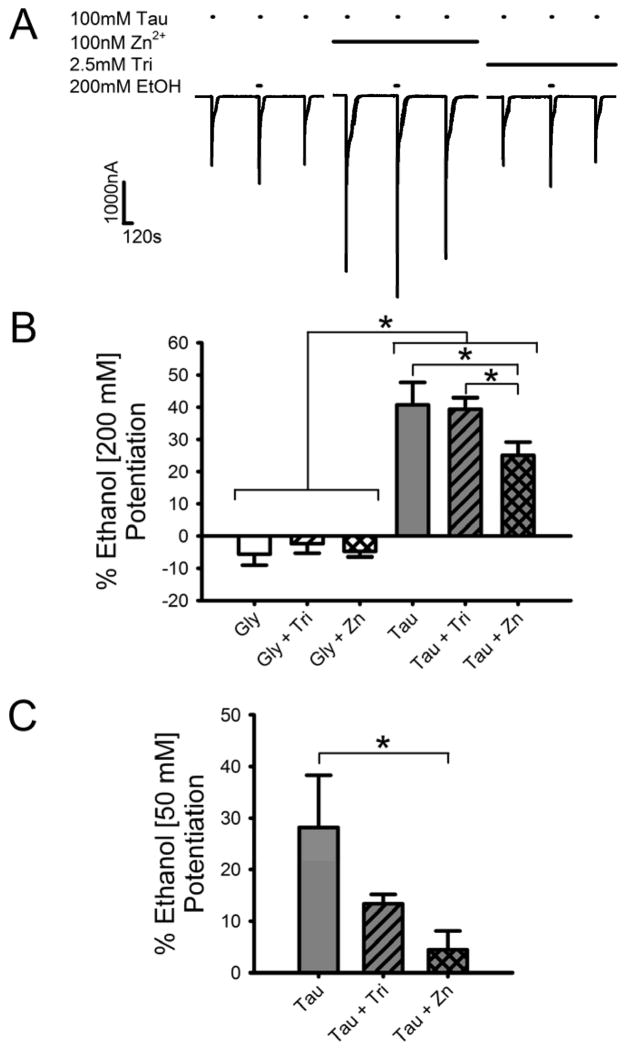Fig. 3.
Zn2+ affects ethanol potentiation of currents elicited by maximally-effective concentrations of taurine but not glycine. A) Sample tracings showing the effect of Zn2+ on brief applications of maximally-effective concentrations of taurine. Taurine (100 mM) was co-applied with 200 mM ethanol for 15 s following a 30 s preincubation with 200 mM ethanol. Ethanol applications were flanked by 15 s applications of maximally-effective taurine applied alone. Series of applications were carried out in buffer containing background levels of Zn2+, 2.5 mM tricine or 100 nM Zn2+. Horizontal bars over tracings indicate time of exposure to taurine, tricine, Zn2+ or ethanol. B) Summary of the effects of 200 mM ethanol on brief applications of maximally-effective concentrations of glycine or taurine in the presence of a background level of Zn2+, the absence of Zn2+ produced by tricine, or the addition of 100 nM Zn2+. The y-axis represents the percent current potentiation observed with ethanol co-application, in background Zn2+, 2.5 mM tricine or 100 nM Zn2+. Data are shown as mean ± S.E.M. of 6 oocytes. C) Summary of the effects of 50 mM ethanol on brief applications of maximally-effective concentrations of taurine in the presence of a background level of Zn2+, the absence of Zn2+ produced by tricine, or the addition of 100 nM Zn2+. The y-axis represents the percent current potentiation observed with ethanol co-application, in background Zn2+, 2.5 mM tricine or 100 nM Zn2+. Data are shown as mean ± S.E.M. of 8 oocytes. *, p < 0.05.

